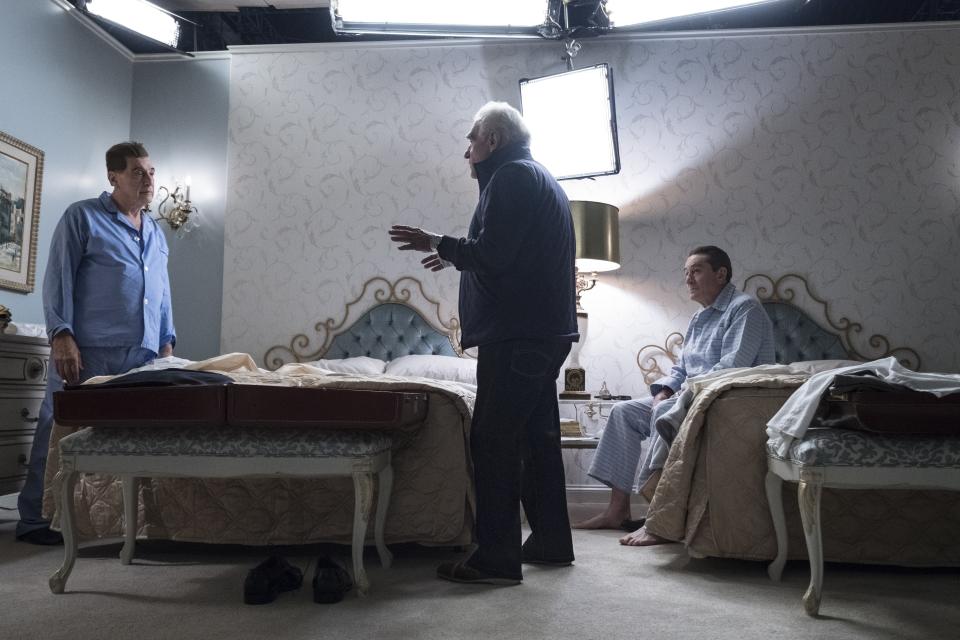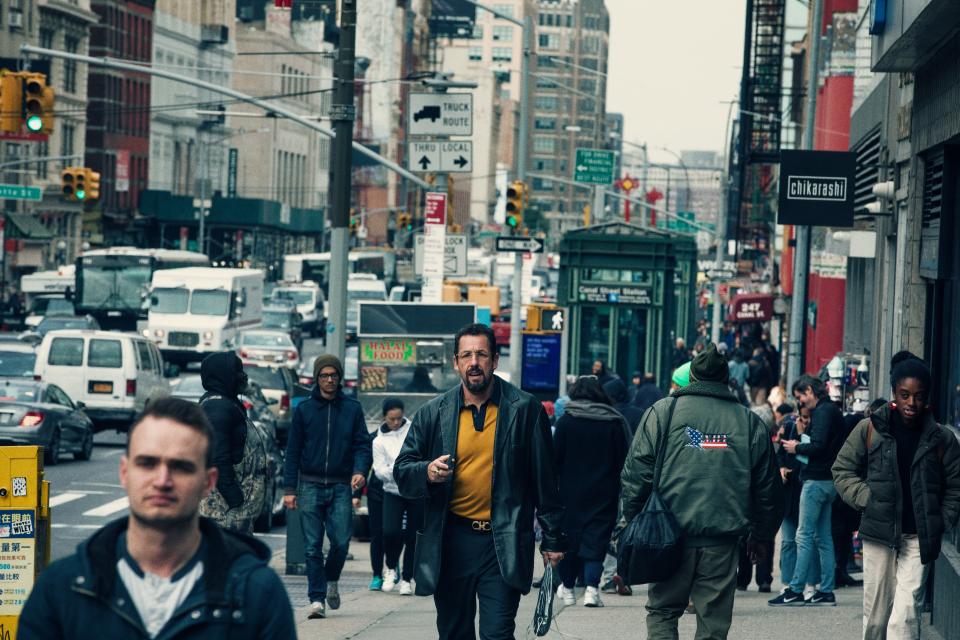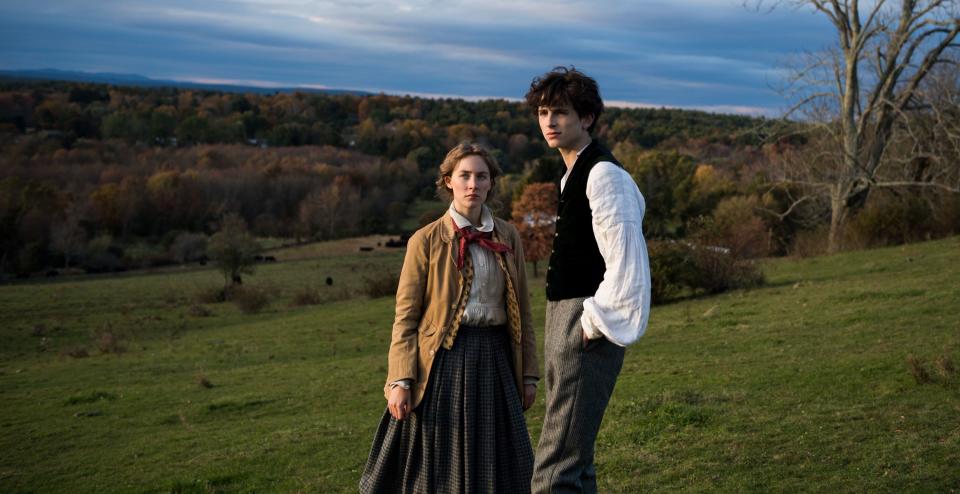Why Movie-Character Style Is Ascendant
A man on the big screen: Dads aside, there is perhaps no more potent influence on the male ego, at least when it comes to how to be, how to drink, how to confront your enemies, how to treat a woman, and how, of course, to dress. Sean Connery, Pierce Brosnan, Daniel Craig, and more have instructed generations of men on how to wear tuxedos and watches. Mad Men’s Don Draper brought bar carts back into American living rooms, where flatscreen TVs had become altarpieces. Mob dons in big lapels and flashy jewelry, with their errand boys in lesser thematic getups, like backup dancers, have created ripples in the spearpoint-collar industry. Jerry Seinfeld and Larry David, on and off their respective screens, have demonstrated that you can take a rigorous approach to doing very little. Most recently, The Sopranos, off the air for over a decade, has re-emerged as a guidebook for men who want to look authoritatively sleazy. The mimetic effect of these characters underscores a crucial rule of movie magic: Leading men are instructive, even if they’re antiheroes. However they might wobble morally—and some of them, like Tony Soprano and almost anyone played by Joe Pesci, don’t merely wobble but stumble into full sociopathy—they still represent something that we can’t help but want to be.
This year, American machismo cinema represented a different level of fashion influence, both monetary and somehow viral. (Or even...influencer-esque.) Within a week of the release of Once Upon a Time in...Hollywood, there was a 2,000-person waiting list for the Minnetonka moccasin boots worn by Brad Pitt’s Cliff Booth, the brand’s vice president of business development told Footwear News last fall. There was even something about the way Pitt wore his Levi’s 501s—distressed not by machine but by something more existential, which rendered them soft enough that Booth pulls his keys out of the front pocket with pistol-draw precision when escaping vampiric hippies. They looked like they were plucked off the runway of the latest Celine men’s show, where Hedi Slimane once again elevated denim to high art (the distress is assuredly done with couture-level care). The Irishman, meanwhile, awakened a new taste for men’s matching pajama sets. And two months before the release of Uncut Gems, men were already dressing as Adam Sandler’s Howard Ratner for Halloween. “That’s the barometer for a costume,” co-director Josh Safdie told GQ. “Can a teenager put it together at the thrift store? And I think they can with this one.” But a number of them weren’t even wearing it as a costume: Walk around downtown Manhattan or the still-hip reaches of corporatized Williamsburg, and you’ll find men in leather blazers, designer imposter silk shirts, and logo belt buckles. Everyone in so-called SoHo dresses like this now.

We’re smack in the middle of a new era of personal expression in men’s style, when men are eager to experiment and embrace new modes of assembling ensembles. Movies provide ripe inspiration because their ideas come not from the diktats of fashion runways but from a movie-world fantasy, like our own but better in all the right ways. The clothes are there to tell us something about a person, and not merely to sell us an idea of who we could be. The filmmakers behind those three movies—Quentin Tarantino, Martin Scorsese, and Josh and Benny Safdie—are particularly clothing-aware, known for making films that launch new attitudes in style. (Tarantino’s Pulp Fiction generated the kinds of Halloween costumes you can buy ready-made in a single bag.) In fact, many of the clothing cues were written into the screenplays for Once Upon a Time and The Irishman, the costume designers have said in interviews, and the Safdies work with a costume designer, Miyako Bellizzi, and consultant, Mordechai Rubinstein—who scour the streets of the neighborhoods in which the Safdie films take place to achieve ultimate fashion vérité.

But there’s something slightly more philosophical—or perhaps psychological—at play. The unprecedented excitement around those costumes is matched by an unprecedented disinterest in being like the men wearing them. Who would trade places with any of the lonely old psychos in The Irishman? Who’s looking to live in Pitt’s trailer, measuring the days in cans of dog food? What lunatic among us would want to be Ratner, a drowning man whose life preservers just won’t inflate? Male writers and directors (like their female counterparts, who have brought us Fleabag and Russian Doll, to name just two great works of art about unsteady women), are getting more adept at putting losers at the middle of stories. (Call them antiheroes, if you’re feeling fancy.) The Irishman is a three-and-a-half-hour deflation of the Macy’s Parade–scale balloon that is our cultural fantasy of mafia infallibility; the pajama moment is not humanizing so much as gently humiliating. The great triumph of Uncut Gems is its evenhanded treatment of Ratner. Once Upon a Time takes this concept as its entire theme, a meditation on the history of (and problems with) hero worship. Movie audiences are trained to idolize Rick Dalton types, but it’s the little guys, the seemingly irrelevant men in the background, who are really worth admiring; even then, the admiration is a little dubious. (And wouldn’t ya know: The movie also has a potent little monologue about the perplexing appeal of a troll-like director.) Yeah, Pitt’s Booth is a hunk, but no hunk has ever been so down on his luck, so confined to the footnotes of history. When the chic celebrity neighbors finally come calling, Rick has sent his friend off in an ambulance.

The men have gotten less hero, and more anti-. But if we can’t worship the guy, it’s still safe to worship the clothes. This becomes even clearer when we look at a film that hasn’t been imitated and scrutinized by men and menswear fanatics: Greta Gerwig’s Little Women. Laurie, played by Timothée Chalamet, is the hot, impetuous rich kid next door; he’s undeserving of our heroine’s adoration because he refuses to do anything beyond coming along for the ride. In other words: the ultimate “creative director” boyfriend. Ironically, because it’s a period drama, Gerwig’s read of this handsome young clotheshorse might cut a little too close to the bone for many male viewers: The archetype is too uncomfortably familiar to make men put on a blouse and a paisley waistcoat, the latter of which turns up a few scenes later, without mention, on Laurie’s love interest, Jo March. As viewers might know from personal experience—and can see plainly in the theater—it looks better on her.
Originally Appeared on GQ

